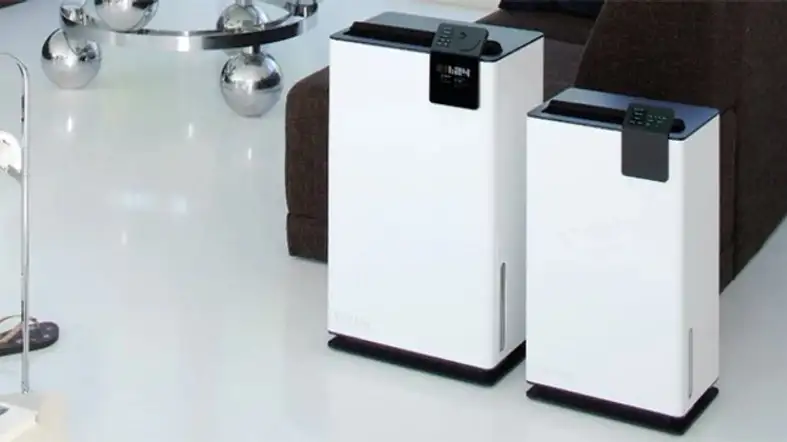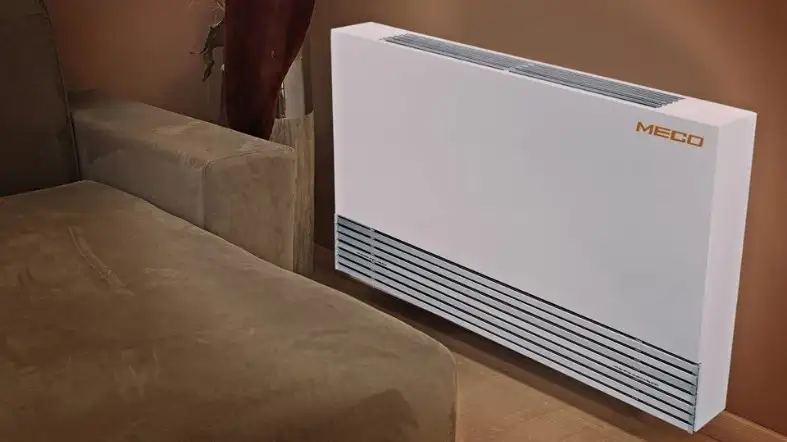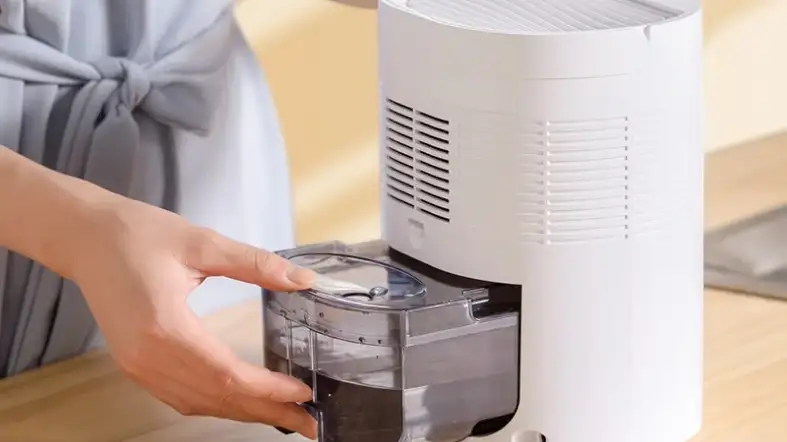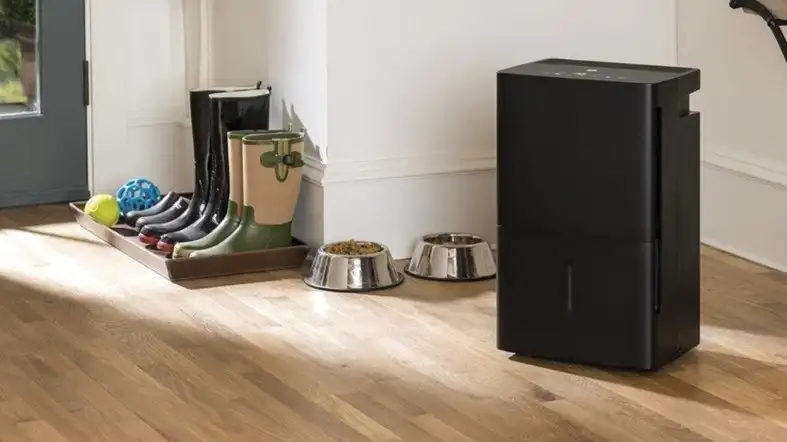Choosing the right size dehumidifier for a 3-bedroom house is crucial for maintaining a healthy and comfortable living environment. The wrong choice can lead to excessive moisture, mold growth, and other issues.
This article will guide you through the process of determining the correct dehumidifier size, exploring various types, and providing insights on considerations.

What Size Dehumidifier Do I Need For A 3 Bedroom House?
For a 3-bedroom house, measuring between 1,000 to 2,500 square feet, a dehumidifier with a capacity of 30 to 50 pints per day is recommended. Ensure to account for factors like high humidity or additional moisture sources when choosing the appropriate size.
3 Bedroom House Dehumidifier Size Chart:
| Room Size | Dehumidifier Capacity (Pints) | Recommended Brands/Models |
|---|---|---|
| Up to 1,000 sq. ft. | 30-40 | Frigidaire FFAD3033R1, hOmeLabs HME020031N |
| 1,000-2,000 sq. ft. | 40-50 | Keystone KSTAD50B, TOSOT 50 Pint Dehumidifier |
| 2,000-3,000 sq. ft. | 50-70 | hOmeLabs HME020070N, LG PuriCare UD701KOG3 |
Different Types of Dehumidifiers Suitable for a 3 Bedroom House
Desiccant Dehumidifiers
Desiccant dehumidifiers are ideal for small spaces and low-temperature environments. They use a desiccant material, such as silica gel, to absorb moisture from the air.
These dehumidifiers are energy-efficient and quiet, making them perfect for bedrooms. However, they have a lower capacity than other types of dehumidifiers and require frequent maintenance.
Refrigerant (or Compressor) Dehumidifiers
Refrigerant dehumidifiers are the most common type of dehumidifier. They use a compressor and refrigerant to cool the air and remove moisture.
These dehumidifiers are effective in high-temperature environments and can handle large spaces.
They are also easy to maintain and have a high capacity. However, they can be noisy and consume more energy than other types of dehumidifiers.
Thermo-electric Dehumidifiers
Thermo-electric dehumidifiers use the Peltier effect to remove moisture from the air. They are small, lightweight, and portable, making them ideal for small spaces such as bedrooms.
They are also energy-efficient and quiet. However, they have a lower capacity than other types of dehumidifiers and are not suitable for large spaces.
How to choose the appropriate size of a dehumidifier
The capacity of the water tank
It has been determined up until this point that the amount of pints of water, or moisture, that a dehumidifier is able to pull in on a daily basis serves as the basis for its rating.
When shopping for a dehumidifier, it is essential that you take into account its capacity to extract an adequate amount of water from the air—an amount that is sufficient to meet the needs of the space in which you plan to use it.
In most cases, a higher unit rating is necessary for rooms that are bigger in size.
>> What dehumidifier size for 2000 sq ft?
Capacity For Air Circulation

This simply refers to the rate at which a unit is able to move a certain quantity of air per minute.
Some dehumidifiers make use of this rating type, in which, as opposed to the water capacity, the measurement of its moisture-absorbing rate is based on the amount of air that it is able to cycle through the atmosphere per minute.
This is in contrast to the rating type used for water capacity. During the process of air circulation, moisture is extracted from the air that is passing through the unit.
However, the number of times that the dehumidifier is able to process all of the air in the room is determined by the square footage of the room.
Available Size of Dehumidifier for a 3 bedroom House
The many distinct kinds of dehumidifiers can each be placed into one of the numerous categories, some of which are the kind, capacity, mounting possibilities, and so on.
Now speaking in terms of the water tank capacity, this is what determines the fundamental moisture-absorbing level, and as a result, the capacity of the unit, as well as the size of the room in general that it is able to service.
According to the capacity of their water tanks, dehumidifiers can be divided into the following categories:
Small Capacity Dehumidifier

Units that fall into this category have been developed to extract a reasonable amount of moisture from the air each day despite their relatively low capacity.
It is capable of removing approximately 30 to 35 pints of moisture every day and is most suited for use in small enclosed spaces that are more figuratively than practically drenched in moisture.
Medium Capacity Dehumidifier
The medium capacity units are able to perform at a level that is superior to that of the small type.
These units are suitable for slightly larger room sizes and have the capacity to remove up to 50 pints of moisture per day.
They would do well in surroundings that are moist, and while being less effective in wet locations, it normally perform better than the type that has little capacity.
Large Capacity Dehumidifiers

Large-capacity dehumidifiers are those that can pull from the air at least 60 pints of moisture on a daily basis, with some models even being able to pull in excess of that amount.
The vast majority of them are able to manage a significantly wider range of humidity than the medium and small kind, in addition to being quieter and boasting improved functionality.
Whole-house dehumidifiers
Whole home dehumidifiers, much like the finest dehumidifiers for a crawl space, are at the very top of the food chain when it comes to the different types of domestic dehumidifiers.
This type of heating system may be placed as a portable unit or as an add-on to your central heating system, and it can handle spaces that are as large as 5000 square feet with ease.
They are expensive, but they would really do an excellent job wherever they were placed, while also helping you run your air conditioner less due to the high amount of moisture that it removes, which would help you save energy and money on your energy bills. This is because they remove a lot of moisture.
Key Benefits of Using the Right-Sized Dehumidifier
Room’s Moisture Levels
The higher the moisture, the larger the dehumidifier needed. Measure humidity with a hygrometer.
House Location and Climate
Homes in humid climates need larger dehumidifiers. Coastal areas often have high humidity.
Presence of Basements or Attics
Basements and attics often have more moisture. Consider this when choosing a dehumidifier.
Number of Occupants
More people mean more moisture. A larger family may require a larger dehumidifier.
Usage of Other Appliances
Appliances like air conditioners and heaters can affect indoor humidity levels.
House Insulation and Ventilation
Well-insulated and ventilated homes can often be managed with smaller dehumidifiers.
Specific Needs
If someone in the house has allergies or there’s a need for mold prevention, a larger dehumidifier may be necessary.
Energy Efficiency and Power Consumption
Look for energy-efficient models to save on power bills without compromising on performance.
Budget Constraints
Balance between the cost of the dehumidifier and its effectiveness in managing humidity.
Warranty and Brand Reputation
Choose brands with good reputations and warranty coverage for peace of mind.
FAQs about selecting the size of Dehumidifier for a 3-bedroom house
Can I use a large capacity dehumidifier for smaller spaces?
Yes, you can use a large-capacity dehumidifier in smaller spaces, but it may consume more energy than necessary.
Do thermo-electric dehumidifiers work well in large spaces?
No, thermo-electric dehumidifiers are best suited for small spaces due to their lower capacity.
Does the capacity of the water tank influence the dehumidifier’s efficiency?
Yes, the water tank capacity is indicative of how much moisture the dehumidifier can extract daily, affecting its efficiency.
Are whole-house dehumidifiers suitable for homes smaller than 5000 square feet?
While whole-house dehumidifiers can handle spaces up to 5000 square feet, they can also be effective in slightly smaller homes.
Does a higher unit rating always mean better performance in larger rooms?
Typically, a higher unit rating is necessary for larger rooms, but other factors like humidity levels and ventilation also play a role in performance.
Final Thoughts
Now you know the answer to the question, “ what size dehumidifier do I need for a 3-bedroom house?
Choosing the proper size dehumidifier for your home is the most significant aspect of selecting a unit; therefore, it is essential that you understand the numerous varieties and their compatibility.
If you are considering whole-house dehumidification for a home with up to three bedrooms, then the whole-house type is for you; for smaller homes, you will need a small or big capacity unit.
